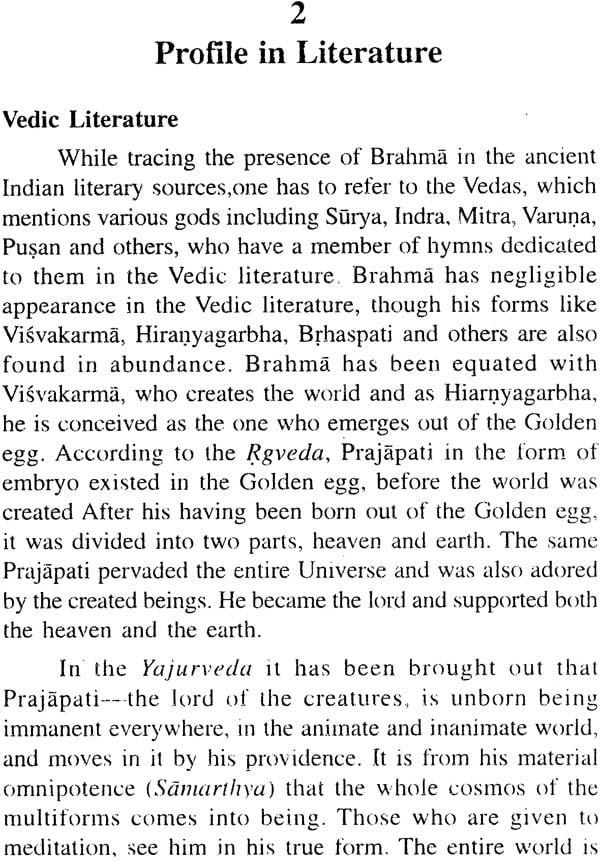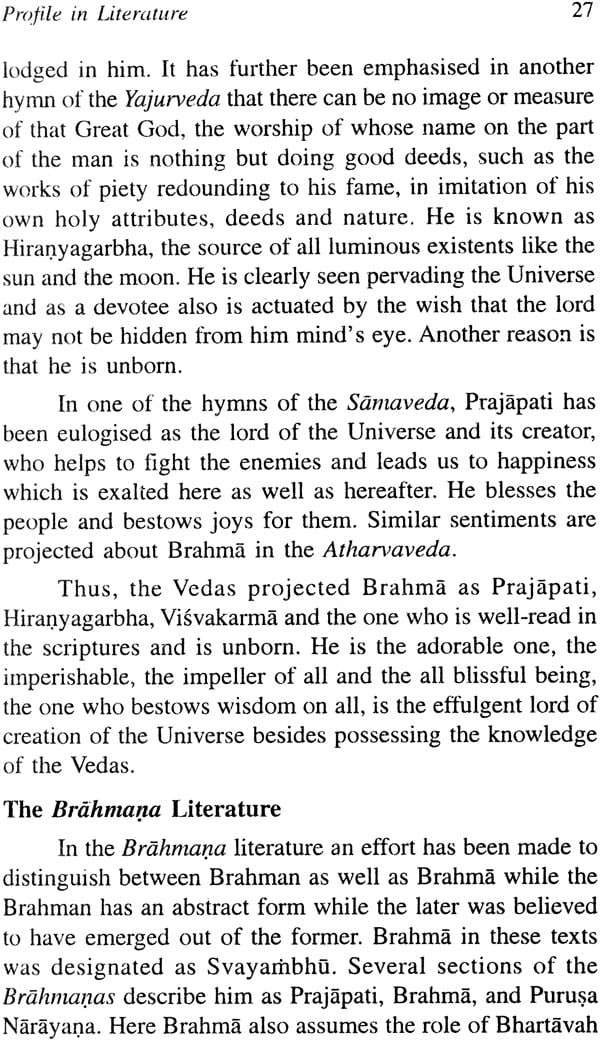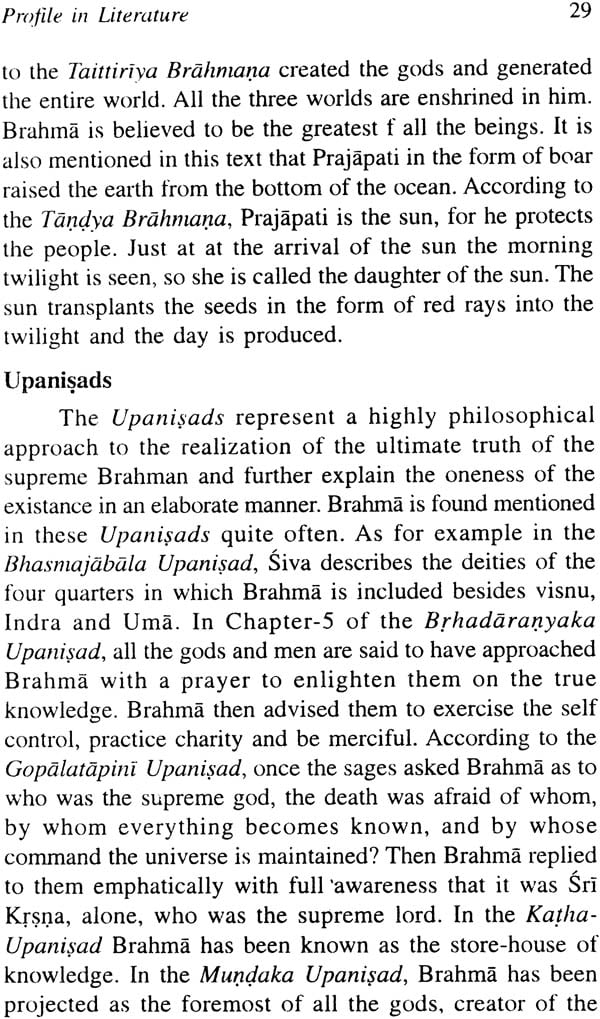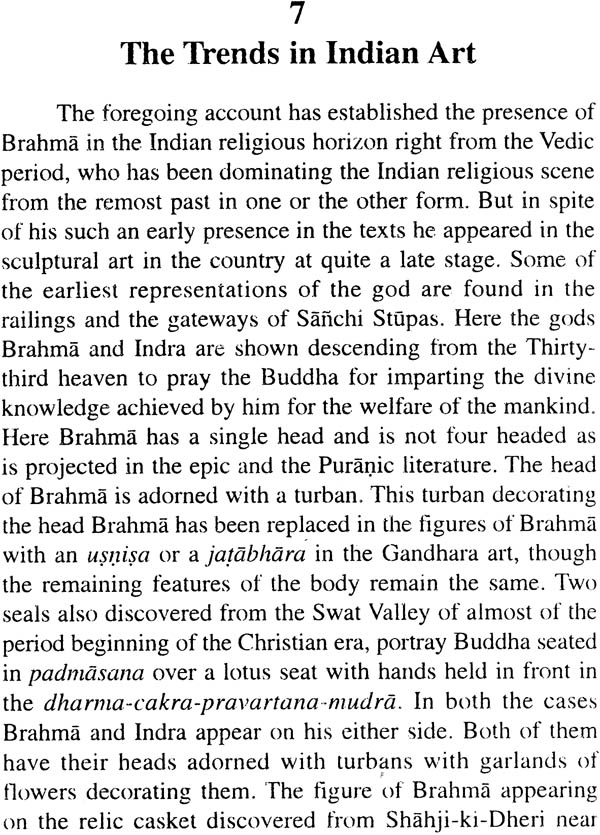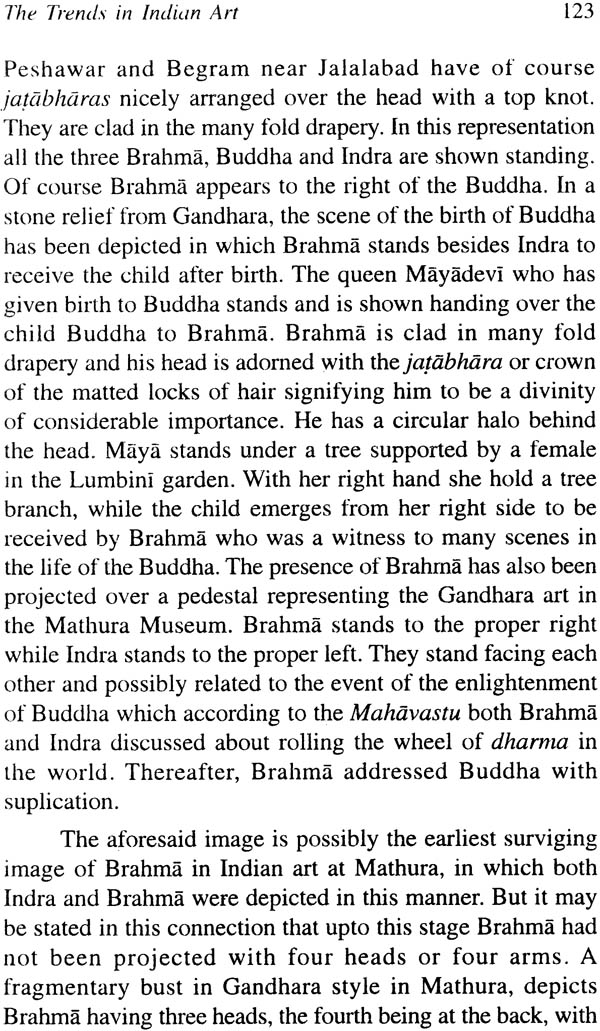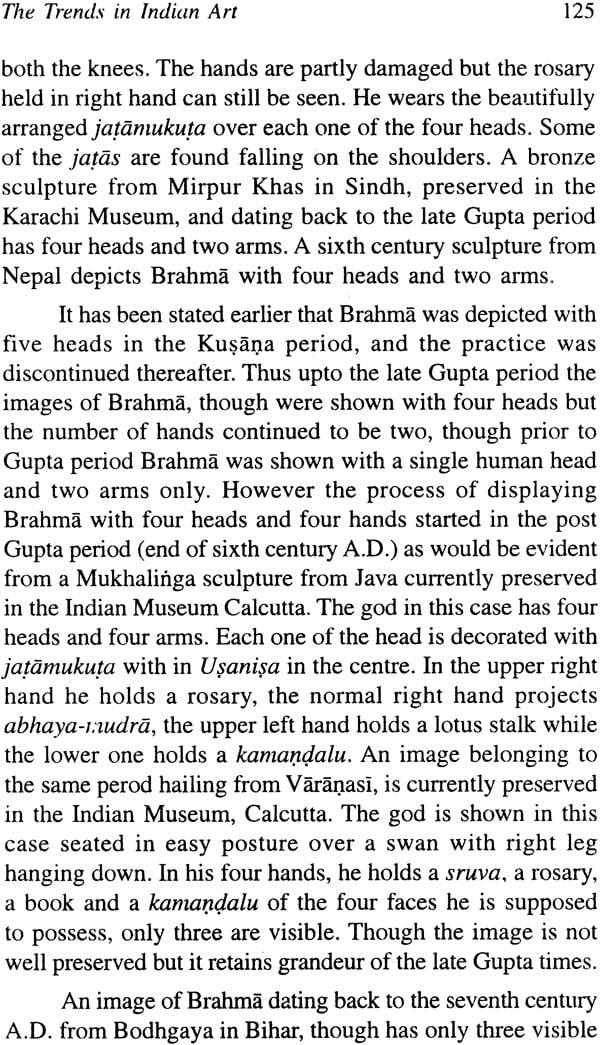
Brahma (The Creator)
Book Specification
| Item Code: | IDK165 |
| Author: | Shantilal Nagar |
| Publisher: | B.R. Publishing Corporation |
| Language: | English |
| Edition: | 2006 |
| ISBN: | 9788176464802 |
| Pages: | 142 (1 B/W Illustration) |
| Cover: | Hardcover |
| Other Details | 8.7 X 5.7" |
| Weight | 300 gm |
Book Description
Brahma is one of the most important god of the Hindu trinity, the others being Visnu and Siva. He is the creator of the universe and possesses the knowledge of the Vedas. Sarasvati happens to be his spouse. He is known as Prajapati in the Vedic literature while with Puranic literature he is mostly known as Brahma who emerged from the navel of Visnu seated over a lotus. He earned a blemish because of his incestuous relationship with his own daughter as a result of which his worship was limited to a few places in India like Puskara and others.
About the Author
Shantilal Nagar, a graduate of the Punjab University, served in the curatorial capacity in the Central Asian Antiquities Museum, New Delhi, the Archaeological Museum, Nalanda, and Archaeological Section of the Indian Museum, Calcutta for a number of years. He has to his credit the scientific documentation of over fifty thousand antiquities, in these museums, representing the rich cultural heritage of the country and comprising of sculptures, bronzes, terracottas, beads, seals and sealing, ancient Indian numismatics, wood work, miniatures and paintings, textiles and Pearce collection of gems, ranging from the earliest times to the late medieval period, He was awarded, in 1987, a fellowship, for his monograph on the temples of Himachal Pradesh, by the Indian Council of Historical Research, New Delhi. He has authored more than fifty books.
| | ||
| 1. | Introduction | 1-25 |
| The Creation, Four Castes, His Greatness, A Creative Force, Narayana, Lotus, The same as Visnu, The life of Brahma | ||
| 2. | Profile in Early Literature | 26-59 |
| Vedic Literature, The Brahmana Literature, Upanisads, Dharma Sastras (a) Samhitas, (b) Grhyasutras, the Epics (i) Valmiki Ramayana, (ii) Ananda Ramayana, (iii) Adhyatma Ramayana, (iv) Adhyatma Ramayana (Malayalam), (v) Jagmohan Ramayana (Oriya), (vi) Madhava Kandali Ramayana (Assamese), (vii) Krttivasa Ramayana (Bengali), (viii) Torvey Ramayana (Oriya) and Bhavartha Ramayana (Marathi), (x) Kashmiri Ramayana, (xi) Ranganatha Ramayana (Telugu), (xii) Ramakirti Mahakavya (Ramayana from Thailand), (xiii) Adhyatma Ramayana (Bengali), (xiv) Girdhara Ramayana (Gujarati), (xv) Kamba Ramayana (Tamil), (xvi) Karvi Ramayana (Assamese), (xviii) Molla Ramayana (Telugu, The Mahabharata. | ||
| 3. | The Profile in the Puranas | 60-79 |
| (1) Agni Purana, (2) Markandeya Purana, (3) Matsya Purana, (4) Padma Purana, (5) Harivamsa Purana, (6) Visnudharmottara Purana, (7) Brahmavaivartta Purana, (8) Brahma Purana, (9) Garuda Purana, (10) Bhavisya Purana, (11) Skanda Purana, (12) Surya Purana, (13) Linga Purana, (14) Bhagavata Purana, (15) Naradiya Purana, (16) Kalika Purana, (17) Brahanda Purana. | ||
| 4. | Others Aspects | 80-105 |
| (1) The Rivalry, (2) Loss of fifth head, (3) Curse of Sarasvati; (4) As Prana-Purusa, (5) Conduct of Brahma during the marriage of Siva and Sati, (6) Episode of Usa's marriage, (7) Brahma as a Boar, (8) A Great Scholar, (9) Foremost of the Gods, (10) The Position of the mind-born sons, (11) Prajapatis as sons of Brahma (i) Mahabharata, (ii) Garuda Purana, (iii) Vayu Purana, (iv) Matsya Purana, (v) Other sons, (12) Sarasvati as a spouse, (13) As a fighter, (14) Restores the Wife of Brhaspati, (15) Curse of Mohini, (16) Curse of Gandharvas, (17) Humiliation at the hands of Ganesa, (18) Acquiring of Four Heads, (19) Stole Cows and Cowherds, (20) Views of a Tamil Purana, (21) Destruction of the demon Aruna. | ||
| 5. | Iconography | 106-110 |
| (1) Heads, (i) Single Head, (ii) Three Heads, (iii) Four Heads and Five Heads, (2) Headdress, (3) Facial Decoration, (4) Eyes and Ear, (5) The Arms and Attributes, (6) The Seat or Vehicle, (7) Costumes, (8) Ornaments, (9) Physical Features. | ||
| 6. | The Composite Forms | 111-121 |
| (i) Brahma-Siraschedanamurti-Siva, (ii) Caturmukhalinga, (iii) Lingodbhava, (iv) Hari-Hara-Pitamaha, (v) Brahma in Trimurti Form, (vi) Brahma-Visnu-Surya and Siva, (vii) Brahma in Buddhist Art. | ||
| 7. | The Trends in Indian Art | 122-127 |
| 8. | Epilogue | 128-130 |
